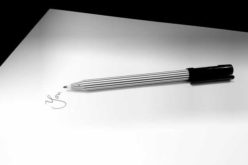Cross-contamination silently compromises data, forces costly do-overs, and even risks animal welfare.
Maintaining a sterile environment is fundamental to the integrity of any scientific experiment. By implementing these protocols, you can ensure your research remains valid and your lab stays safe.
Create Dedicated Work Zones
One of the easiest ways to prevent contamination in a university research lab is to establish separate areas for specific tasks. Designate zones for sterile work, sample preparation, and general use. For example, keep tissue culture work under a laminar flow hood, completely separate from areas where you handle non-sterile items.
Clearly label each zone and the equipment within it. Use color-coded tape or signs to make it obvious what belongs where. This visual system helps everyone on the team, from new students to seasoned researchers, understand where to perform specific tasks and avoid mix-ups.
Adopt Strict Personal Protective Equipment (PPE) Protocols
Your actions directly impact the lab’s cleanliness. Always wear the appropriate PPE, including lab coats, gloves, and safety glasses. Change your gloves frequently, especially after handling contaminated materials or when moving between different work zones.
Never wear lab coats or gloves outside of the laboratory, either. This protocol prevents you from tracking contaminants into common areas like offices or break rooms. Make it a habit to remove all PPE before leaving the lab to protect yourself and others on campus.
Implement a Robust Cleaning and Sterilization Schedule
Regular and thorough cleaning is non-negotiable. Develop a schedule for daily, weekly, and monthly cleaning tasks. Daily duties should include wiping down benchtops and equipment with an appropriate disinfectant, like 70% ethanol.
For sterilization, autoclaving remains the gold standard for many lab tools. Ensure you follow your institution’s validated temperature and time parameters. For heat-sensitive items, use chemical sterilants or filtration methods approved by your lab’s safety guidelines. Document every sterilization cycle to maintain a clear record of compliance.
Handle Lab Instruments with Care
Lab instruments require careful handling to prevent contamination. Assign specific tools for particular tasks. For instance, never use surgical scissors for tissue dissection to cut tape or open boxes. This simple practice keeps critical instruments in optimal condition and reduces contamination risk.
Clean instruments immediately after use. Biological material becomes much harder to remove once it dries. A simple protocol involves rinsing with distilled water, soaking in an enzymatic cleaner, and performing an ultrasonic cleaning for intricate tools. Proper care ensures that preventing cross-contamination in a university research lab becomes a manageable part of your workflow.
Maintain a Clean and Safe Lab Environment
Ultimately, a clean lab is a team effort. Everyone who uses the space shares the responsibility for upholding these standards. Regular training, clear communication, and posted protocols help reinforce good habits. When everyone understands the importance of these practices, you create a culture of safety and scientific integrity that benefits all.
Image Credentials: By Gorodenkoff, 415825505
end of post … please share it!
PAYING FOR COLLEGE: getting the aid you need
-------------------------------------------------------------------------------------------------------------
end of post idea
-------------------------------------------------------------------------------------------------------------
view home improvement ideas at our Photo Remodeling center
Helpful article? Leave us a quick comment below.
And please share this article within your social networks.











